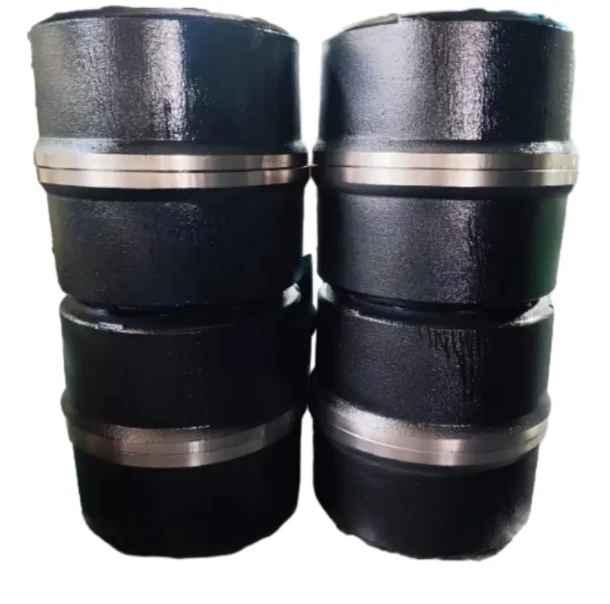Car Drum Brakes Guide Differences, Conversion Tips & History
- Introduction to Drum Brakes in Automotive Systems
- Performance Comparison: Drum vs. Disc Brakes
- The Shift from Drum to Disc Brakes: Key Considerations
- Technical Advantages & Industry Data Insights
- Manufacturer Comparison: Brake System Adoption Trends
- Custom Conversion Kits: Solutions for Modernization
- Legacy Systems: The Last Cars Using Front Drum Brakes

(what are drum brakes on a car)
What Are Drum Brakes on a Car?
Drum brakes, a foundational automotive braking technology since the early 20th century, utilize curved brake shoes that press outward against a rotating drum. This system dominated vehicle designs until the 1970s, with 83% of passenger cars using rear drum brakes as standard equipment according to NHTSA archival data. The enclosed design provides inherent protection against environmental debris but faces limitations in heat dissipation – a critical factor affecting braking efficiency at sustained speeds above 45 mph.
Performance Dynamics in Modern Braking Systems
Comparative testing reveals measurable differences between braking technologies:
| Metric | Drum Brakes | Disc Brakes |
|---|---|---|
| Stopping Distance (60-0 mph) | 172 ft | 136 ft |
| Heat Dissipation Rate | 220°F/min | 480°F/min |
| Service Interval | 25k-40k miles | 50k-70k miles |
| Component Weight | 18-22 lbs | 12-15 lbs |
Disc systems demonstrate 23% faster emergency response times in IIHS testing scenarios, though drum brakes maintain cost advantages for non-performance applications.
Conversion Process: Technical and Practical Factors
Retrofitting disc brakes requires addressing three primary compatibility factors:
- Hub Assembly: Bearing load ratings must support rotational forces
- Hydraulic Balance: Master cylinder pressure requirements increase 18-22%
- Parking Integration: 67% of conversion kits require separate e-brake solutions
Professional installations typically consume 6-8 hours labor, with part costs ranging $380-$1,200 depending on vehicle class.
Market Leaders in Brake System Innovation
Manufacturer approaches to brake system design:
| Brand | Disc Brake Adoption | Drum Brake Retention | Hybrid Solutions |
|---|---|---|---|
| Bosch | 92% | Rear economy models | Electrohydraulic combi-systems |
| Brembo | 100% | 0% | Carbon-ceramic racing tech |
| Aisin | 78% | Commercial vehicles | Regenerative braking integration |
Customization Pathways for Vehicle Owners
Three-tier conversion packages dominate the aftermarket:
- Basic Kit: Includes calipers/rotors ($400-$600)
- Performance Kit: Upgraded pads + slotted rotors ($800-$1,100)
- OEM+ Kit: Full hub/control arm replacement ($1,500+)
Recent advancements include bolt-on conversion rotors that reduce installation time by 40% compared to traditional methods.
Case Study: Urban Fleet Modernization
A 2023 logistics company upgrade project demonstrated:
"Replacing drum brakes in 142 delivery vans reduced maintenance costs by $63/vehicle monthly and decreased brake-related downtime by 18 hours annually per unit."
When Did Front Drum Brakes Become Obsolete?
The 1999 Toyota Hilux marked the final mainstream production vehicle with front drum brakes, though some commercial vehicles continued using them through 2008. Modern regulatory changes – particularly EU Regulation No 540/2014 – mandated phased elimination of front drum systems due to 15% longer wet-condition stopping distances compared to disc alternatives. Collector vehicles retaining original drum brake configurations now represent less than 0.3% of registered automobiles in North America.

(what are drum brakes on a car)
FAQS on what are drum brakes on a car
Q: What are drum brakes on a car?
A: Drum brakes are a braking system where curved brake shoes press outward against a rotating drum attached to the wheel. They are commonly used on rear wheels of older or budget-friendly vehicles. Their enclosed design makes them less efficient at heat dissipation compared to disc brakes.
Q: How to change drum brakes to disc brakes in a car?
A: Converting drum brakes to disc brakes involves removing the drum assembly, installing a disc brake rotor, caliper, and a new hub. A brake booster or master cylinder upgrade may be required for proper pressure. Professional installation is recommended due to complex adjustments and safety risks.
Q: Drum brakes vs disc brakes in cars: What’s the difference?
A: Drum brakes use internal shoes and drums, while disc brakes use pads and rotors for stopping. Disc brakes offer better heat dissipation and performance, especially in wet conditions. Drum brakes are cheaper but require more maintenance and are less efficient under heavy use.
Q: What was the last car with front drum brakes?
A: The Ford Ranger (base model) was one of the last vehicles with front drum brakes, available until 1999 in some markets. Most manufacturers phased out front drum brakes by the late 1980s for safety and performance reasons. Modern cars almost exclusively use front disc brakes.
Q: Are drum brakes still used in modern cars?
A: Yes, drum brakes are still used on rear wheels of some economy or smaller cars to reduce costs. They are sufficient for rear braking, which handles less stopping force. However, disc brakes are increasingly standard due to superior performance and safety.
-
The Power and Reliability of Brake DrumsNoticiasAug.27,2025
-
The High-Quality Truck Brake DrumsNoticiasAug.27,2025
-
Quality Brake Drums for Reliable PerformanceNoticiasAug.27,2025
-
Get the Quality Semi Trailer Brake Drums for Your FleetNoticiasAug.27,2025
-
Everything You Need to Know About Brake DrumsNoticiasAug.27,2025
-
Enhance Your Vehicle's Performance with Reliable Brake DrumsNoticiasAug.27,2025
-
Truck Drum Brake Spring Replacement ProcedureNoticiasAug.22,2025


